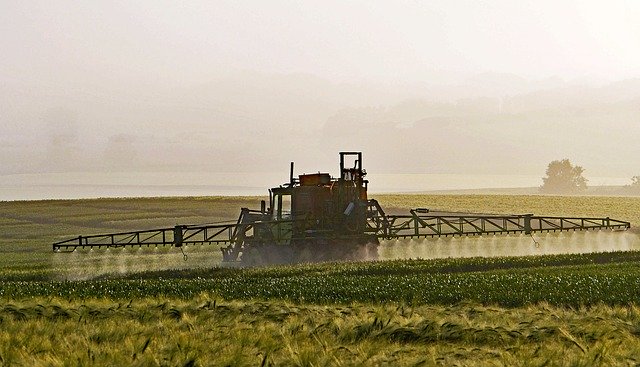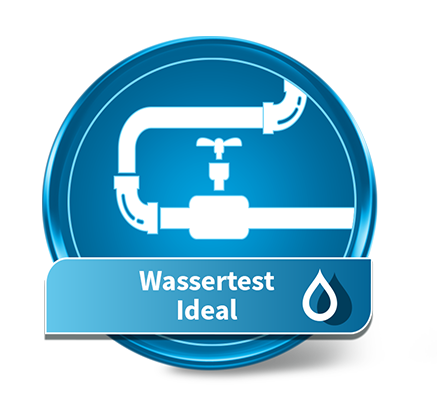Pesticides in Drinking Water – Are Private Analyses Worthwhile in Switzerland?
 In 2020, Switzerland held two popular votes concerning the restriction of synthetic pesticides. These can also be viewed on the official website of the Swiss Confederation. However, both initiatives were rejected – on the grounds that they went too far. But how significant is the threat posed by pesticides in drinking water?
In 2020, Switzerland held two popular votes concerning the restriction of synthetic pesticides. These can also be viewed on the official website of the Swiss Confederation. However, both initiatives were rejected – on the grounds that they went too far. But how significant is the threat posed by pesticides in drinking water?
Which pesticides have been found in Swiss drinking water?
While the sale of Glyphosate was banned in Austria as early as 2019, it continues to be used in Switzerland. Glyphosate inhibits a plant enzyme, thereby suppressing plant growth. Since humans do not possess this enzyme, it was initially considered harmless – however, several studies suggest that it could be carcinogenic for humans and animals.
A counter-study circulated by Monsanto was later exposed as manipulated and retracted, but persists in misinformation. Other pesticides found in drinking water include Chloridazon (herbicide), Chlorothalonil (fungicide), and Atrazine, whose levels have been declining since its ban in 2007. All mentioned substances are based on synthetic chemistry and are considered a health concern if limit values are exceeded.
Do the Federal Food Safety Office's limit values protect us?
The legal limit value for pesticide active ingredients and their metabolites is 0.1 micrograms per liter of drinking water. But even when exceeded – as in Kappelen (BE), where the value was 22 times above the limit – concrete consequences often fail to materialize. New pipelines and a long-term abstinence from use are intended to solve the problem.
Another problem is the long persistence of old substances. Plant protection products based on lead used in the 1980s can still be detected in drinking water today. Although the lead limit value has been lowered to 0.05 micrograms – mandatory implementation will only take place in 15 years.
How do pesticides and fertilizers get into drinking water?
Even with proper application, residues enter the groundwater via soil and water bodies – and eventually our homes. Many affected people do not notice this, as pesticides are often odorless and tasteless. Only an individual water analysis can provide certainty here.
Are there alternatives to using pesticides?
Previously, weeds were removed mechanically by plowing. Today, fewer farmers cultivate larger areas – making chemical agents more attractive. In addition, farmers who use synthetic agents sometimes receive financial support.
Are private tests and controls worthwhile?
Regular water analyses form the basis for high water quality. However, adjustments to legal limit values and controls often occur too slowly. As long as questionable studies – such as those by the controversial scientist Michael Schmitz (formerly University of Giessen, Monsanto-funded) – serve as a basis, skepticism is warranted.
Independent studies and private water analyses create trust, transparency, and certainty about the actual quality of one's own drinking water.
Sources
Federal Institute for Risk Assessment: Pesticide Residues in Drinking Water Umweltinstitut e.V.: Glyphosate Ban in Austria Federal Ministry of Justice: Drinking Water Ordinance SRF: Limit Value Exceeded by 22 Times SRF: How Contaminated is Our "Tap Water"? Swiss Confederation: Drinking Water Initiative FOEN: Plant Protection Products in Groundwater DVGW – German Technical and Scientific Association for Gas and WaterSEO-Keywords (visible): Pesticides in drinking water Switzerland, Glyphosate detection water, Chlorothalonil limit value, private water analysis, check drinking water quality, water laboratory Switzerland, herbicides in tap water, health risks pesticides, Chloridazon water contamination, order water analysis Switzerland
✔ Heavy metals and pollutants
✔ For general drinking water, softeners
✔ Heavy metals and contaminants
✔ Separate bacteria test recommended
✔ Heavy metals and contaminants
✔ Separate bacteria test recommended
✔ Analysis for lead also included
✔ Separate bacteria test recommended
✔ Most common contaminants
✔ Bacteria analysis available separately
✔ 12 common pharmaceuticals
✔ e.g., diclofenac, ibuprofen
✔ Most common pesticides
✔ Glyphosate separate analysis
✔ Commonly used pesticide
✔ Possibly carcinogenic
✔ 20 common PFAS chemicals
✔ Per- and polyfluorinated alkyl substances









